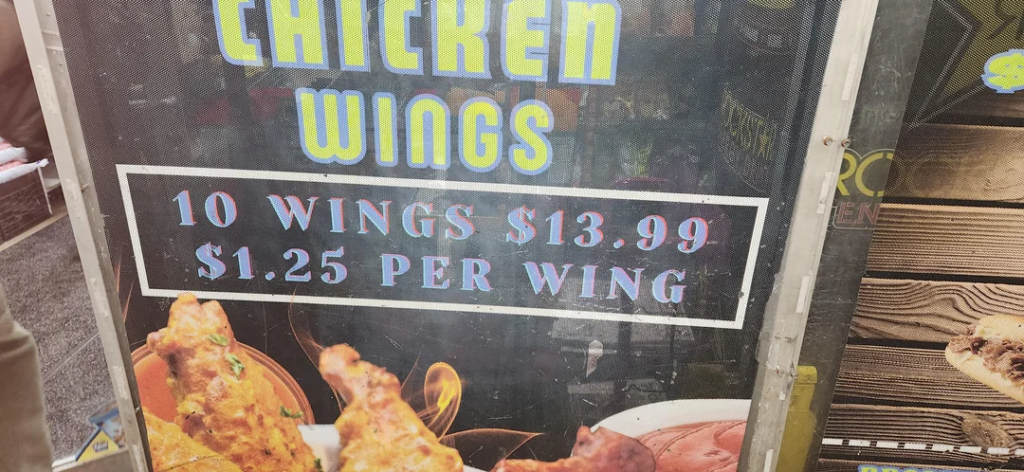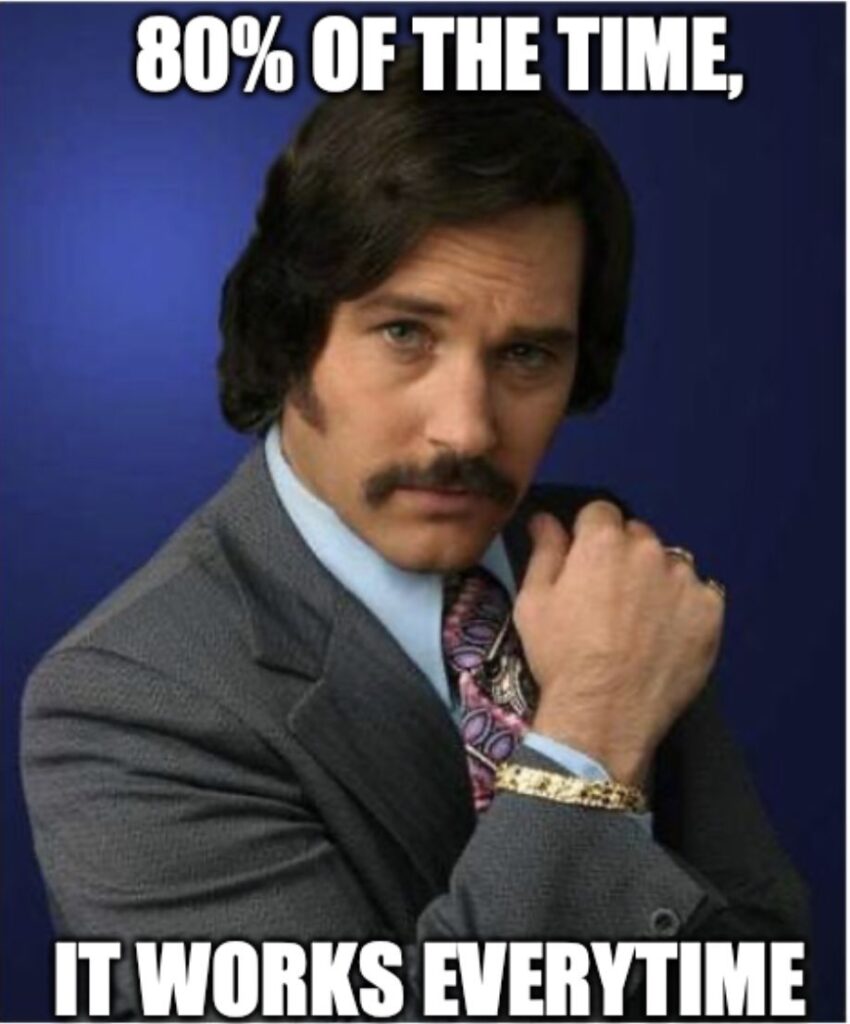EDITOR’S NOTE: Matt is on vacation until at or around January 1, 2026. Until then we have guest posts, today’s post is brought to us by Matt’s P2, Lindsay! Special thanks for the post!
When you’re a P2, especially if your P1 is the infamous MEAB, there’s a level of normalcy that becomes second nature. For example, on any given day a hundred credit cards could arrive at the house and you don’t bat an eye. Or perhaps you mention to your P1 that all the kids will be gone for Thanksgiving, and suddenly you’re going on a Christmas market extravaganza for the second year in a row. (It was amazing, by the way, there’s the cutest elf themed market in Cologne that I highly recommend).
So, yes. I…and perhaps you as well my fellow P2…operate on a different level than the average human. One that is an intense privilege to experience. One that will ruin our children as they age because ‘ew, I have to fly coach are you kidding me?’ or ‘you’ve never been to Europe? That’s so cute’ or even ‘for our wedding, can we take Qatar First Class to Dubai? We don’t want to have to fly with the regular people.’
Dear readers, I want to be clear that I’m being slightly flippant, but I also see nothing wrong with this. My P1 works incredibly hard to give us the life that we lead. So much so that he basically works two jobs: his regular life, and his points one. Additionally, as a formerly single mom who lived in low-income apartments across the hallway from a stripper who would come over and steal my make-up I never could have GUESSED that I’d be able to take my mom and daughter to Paris on lie flat seats because my husband found us great award space.
P2’s, let’s face it. We are on a different level. And we are lucky. Soooo lucky. There are many things in this new level that I did not anticipate. Big, life changing experiences like having to explain to your friend group that YES, you fly first class but NO, you’re not secretly a trust fund baby. Yes, there are many things about this life that I didn’t expect. However…
However…
I think one of the largest things I didn’t anticipate was the inability to watch Secret Lives of Mormon Wives without thinking to myself “ok cool story bro, but that’s not super special.”
HEAR ME OUT LOYAL MEAB FANS.
If you’re anything like me (and I’m talking to the P2’s here) then you’re watching, or have watched, Secret Lives of Mormon Wives on Hulu. If you’re not watching this show, it’s a shame, because it’s demonstrably the best reality show on TV right now, hands down. Even if you’re not watching, I’m sure some of it has seeped into your lives and your streams. From the term “Fruity Pebbles” to low dosing ketamine when you have a fight with your husband to whether or not the Afflecks are actually related to Ben, the show is an exquisite romp that will leave you with your mouth hanging open and your fingers slamming the “next episode” button. BUT, you’ll never want to skip the intro because it is that good.
Now, you might be wondering, how in the world does this connect to the life of the average P2? Don’t worry, I’m getting there. The ladies on SLOMW are constantly traveling, whether it be Europe, LA, or simply St. George. Part of the fun of the show is watching the women traveling. It’s meant to be the thing. The big experience that proves these women have made it big. We, as the audience, are supposed to watch with a sense of awe as the women enter into their hotel rooms or travel to exotic places like Beaver, Utah.
Yet, when I’m watching, I find myself often sort of sneering at the experience of the travel itself. Sometimes I’m like “Huh. That room is just meh.” or WORSE, I’ll think to myself “ew, she flew Southwest, where every seat is first class?”
Let me try and give a good example. There’s an episode (or maybe even two) where #momtok and #dadtok get flown out to LA to do press or something like that (IDK, it doesn’t matter). And, sure, they get professional hair and make-up, and sure, they get to do cool things like give interviews and have busses with their boobs er, faces on them. BUT, their hotel was only sort of…OK. Like, it was nice, I guess, but I was convinced that if any one of them had any sort of status they’d have been given a better room. Or, perhaps, gone to a different hotel that was bougie-er (is that a word?) So, the very thing that Hulu is trying to sell me: beauty, influence, extravagant travel to extravagant places…I’ve already experienced, probably in better accommodations. And I’m just a girl with no influence and no followers.
Which got me thinking. My lovely P2’s, are we…are we influencers without the drama? Because I guarantee you that I’ve flown better, eaten better, had better rooms, and seen more things than the lovely Taylor Frankie Paul…and I didn’t need to be involved in a scandal to do it. And sure, I’d love their reality TV paycheck, but other than that it’s gotten to the point where “next steps” are things that the average person couldn’t dream of, and typically involves things we can’t get with points.
For example, I want to stay at Chateau Marmont like a freaking A list celebrity. I want to stay overnight at the Palace of Versailles like a princess. I want to go to Club 33 at Disneyland, then stay in the guest suite above Pirates of the Caribbean (even though I’m currently in a fight with Disney because I think their Genie Pass RUINED EVERYTHING, but if they offered me a stay inside the park I don’t physically have the willpower to turn it down).
These are the last dregs of bucket list items that, annoyingly, points are unable to purchase. These are the things that normal people typically can’t do, and these are the experiences that even the beautiful ladies of the BEST REALITY SHOW ON TELEVISION have yet to do.
Now, I’m painfully aware of how lucky I am. I’m also aware of how much life has changed in irrevocable ways since MEAB started playing the points game. I’m the luckiest passenger princess, the luckiest bougie bitch, and I am so grateful for everything that my family and I get to see and do and experience. But, dear readers…how do we as P2’s get to that “next level?”
Well, I’ve thought about it, and I’m officially pitching a new reality show concept.
It will be called “The Bougie Lives of P1 Wives”(™). It will be almost exclusively travel based, with the exception of the home shots where our P1’s tell us (probably mic’d but behind a closed door for drama) that they’ve booked us on some crazy cool first class trip because award space opened up. The next shot will be P2TOK(™) getting drunk on Krug 30,000 feet in the air while flying Qantas First Class. We’ll fawn over the pajamas that we get, and exclaim over the amenities kit with $200 perfume samples. (As an aside, that actually happened, MEAB brought me back some from his latest flight and I about died when I looked up the price).
We’ll stay, on points, at places like the Waldorf Astoria Cabo, or an old castle in Argentina, or in an overwater bungalo in the Maldives. The drama will not, as may be assumed, come from infighting, but from 4x reward redemption days at Safeway where there will be multiple shots of P1TOK(™) and their P2’s rushing from store to store to grind because “do you want to go Koh Samui or not Lindsay?” The shot will end with us, in the passenger seat, with a little sweet drink for our sweet little faces.
If your P2 would like to be a part of this, or, if you happen to know any Hollywood producers who’d be interested in my pitch, please let me know! If not..well..that’s ok. Just remember the next time your P1 is grinding for points, or you’re on hold with a credit card company for 30 minutes because the card is in your name, that you are cooler than an influencer.
– Lindsay
Netflix: Please reach out, I’m here.







